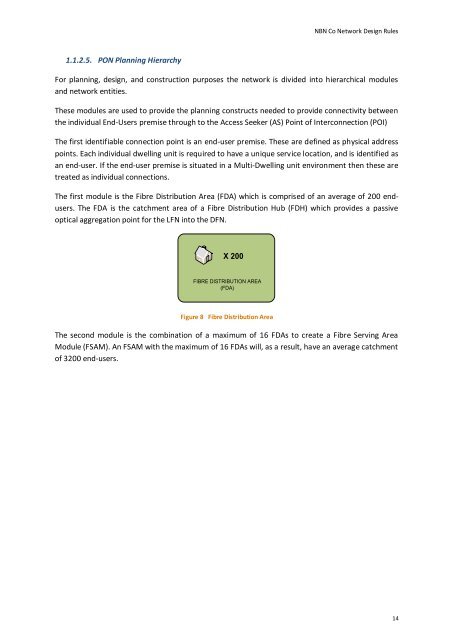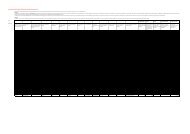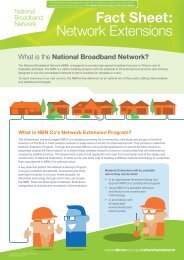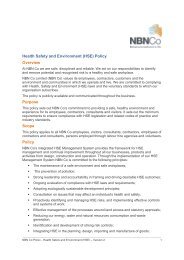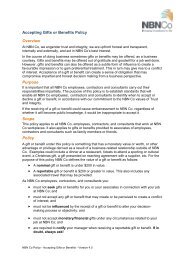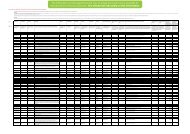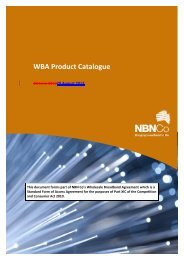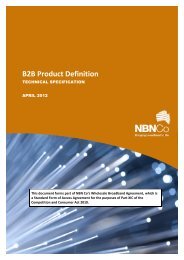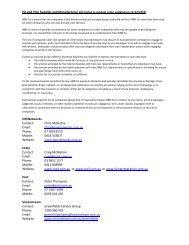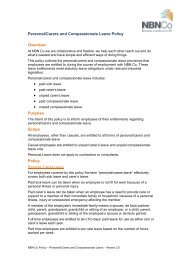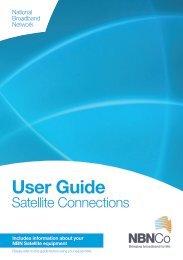NBN Co Network Design Rules
NBN Co Network Design Rules
NBN Co Network Design Rules
You also want an ePaper? Increase the reach of your titles
YUMPU automatically turns print PDFs into web optimized ePapers that Google loves.
<strong>NBN</strong> <strong>Co</strong> <strong>Network</strong> <strong>Design</strong> <strong>Rules</strong><br />
1.1.2.5. PON Planning Hierarchy<br />
For planning, design, and construction purposes the network is divided into hierarchical modules<br />
and network entities.<br />
These modules are used to provide the planning constructs needed to provide connectivity between<br />
the individual End-Users premise through to the Access Seeker (AS) Point of Interconnection (POI)<br />
The first identifiable connection point is an end-user premise. These are defined as physical address<br />
points. Each individual dwelling unit is required to have a unique service location, and is identified as<br />
an end-user. If the end-user premise is situated in a Multi-Dwelling unit environment then these are<br />
treated as individual connections.<br />
The first module is the Fibre Distribution Area (FDA) which is comprised of an average of 200 endusers.<br />
The FDA is the catchment area of a Fibre Distribution Hub (FDH) which provides a passive<br />
optical aggregation point for the LFN into the DFN.<br />
X 200<br />
FIBRE DISTRIBUTION AREA<br />
(FDA)<br />
Figure 8 Fibre Distribution Area<br />
The second module is the combination of a maximum of 16 FDAs to create a Fibre Serving Area<br />
Module (FSAM). An FSAM with the maximum of 16 FDAs will, as a result, have an average catchment<br />
of 3200 end-users.<br />
14


